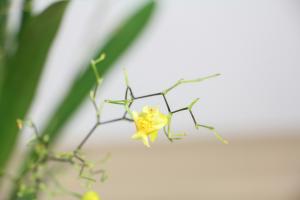How Do Plants Absorb Water
Water is vital for the growth and survival of plants. It provides the necessary nutrients for photosynthesis and helps plants to maintain their turgor pressure. However, the process of how plants absorb water is not as simple as it may seem. In fact, it is a complex process involving various mechanisms.
Roots Absorb Water
Roots are responsible for absorbing water from the soil. The structure of roots is designed for this purpose. The surface of the roots is covered with tiny root hairs which increase the surface area for water absorption. The root hairs are in close proximity to soil particles and minerals, which makes it easier for plants to absorb the water and nutrients they need. Roots use a process called osmosis to absorb water. Osmosis is the movement of water from an area of high concentration to an area of low concentration through a semi-permeable membrane. The root cells are semi-permeable, which allows water to move into the plant.
Capillary Action
Another mechanism that helps plants absorb water is capillary action. Capillary action refers to the ability of water to move up a narrow tube against the force of gravity. In plants, this mechanism is used to transport water from the roots to the leaves. Plants have a network of tiny tubes called xylem that run from the roots to the leaves. These tubes are made up of long chains of dead cells that are lined up end-to-end. The chains are so narrow that the water molecules at the edges of the chain are attracted to each other more than they are to the air around them. As a result, water is drawn up through the xylem, against the force of gravity.
Transpiration Pull
Transpiration is the process of water evaporating from the surface of a plant. This process creates a suction or pull that helps to draw water up through the xylem. The pull is created by the loss of water vapor from the leaves of the plant. As water vapor leaves the plant, it creates a negative pressure that pulls water up through the xylem. This process is also known as the transpiration pull.
Conclusion
As we can see, the process of how plants absorb water is a complex mechanism involving various processes such as osmosis, capillary action, and the transpiration pull. Plants have adapted to their environment by developing these mechanisms to ensure that they have access to the water and nutrients they need for growth and survival. Understanding these mechanisms can help us to better appreciate the amazing ability of plants to survive in a wide range of environments.

 how many times do yo...
how many times do yo... how many planted tre...
how many planted tre... how many pine trees ...
how many pine trees ... how many pecan trees...
how many pecan trees... how many plants comp...
how many plants comp... how many plants can ...
how many plants can ... how many plants and ...
how many plants and ... how many pepper plan...
how many pepper plan...































